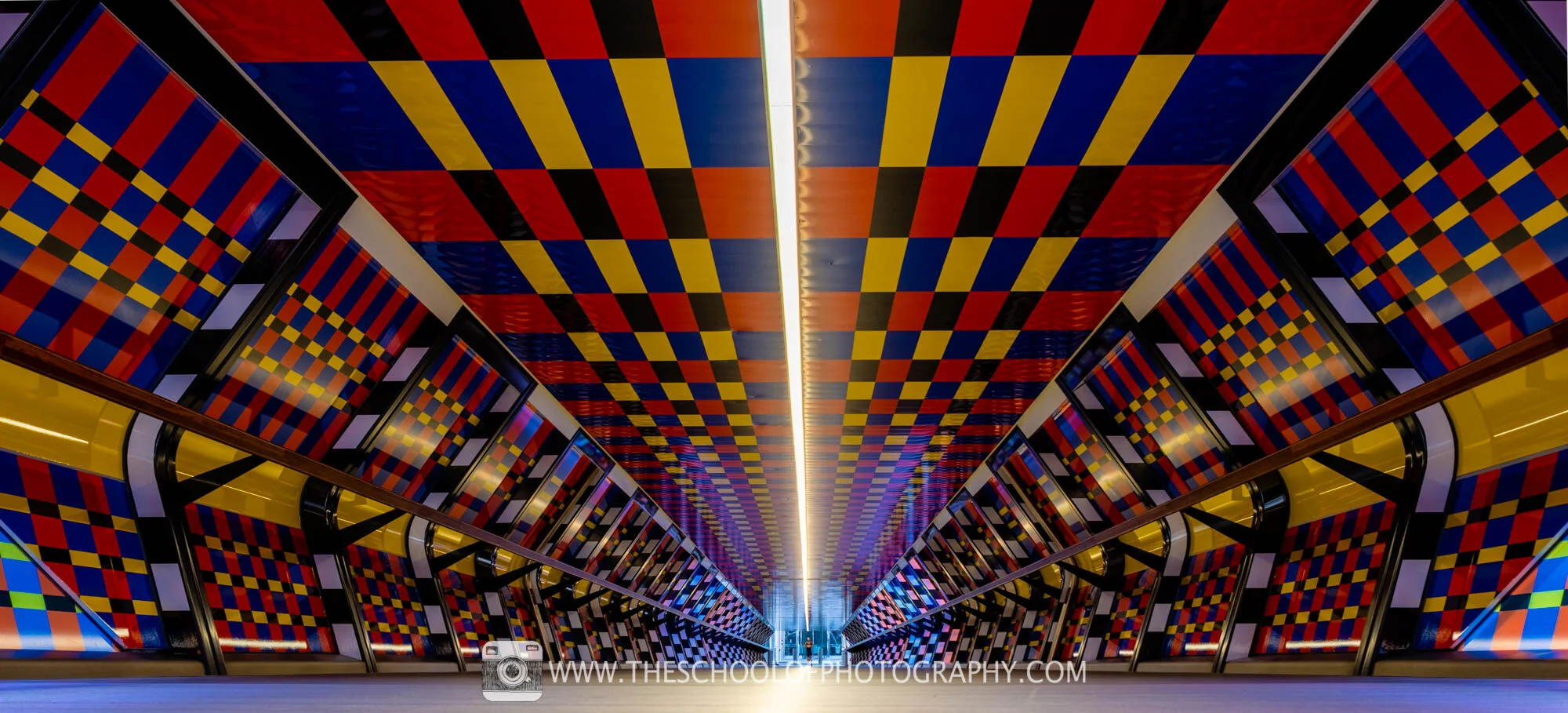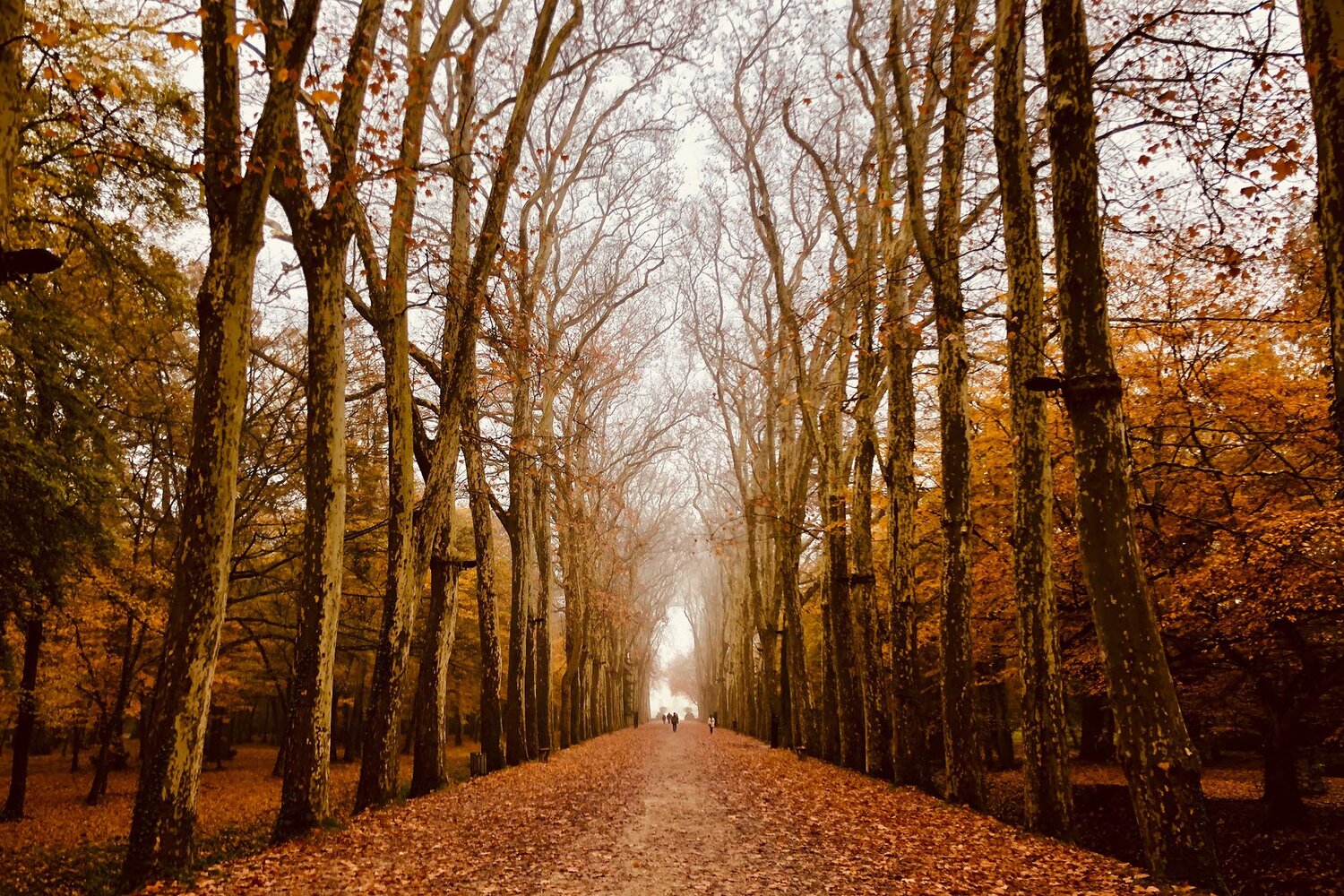Symmetry is directly linked to balance and strength. The property of being symmetrical especially.

7 Great Tips To Use Symmetry In Photography
Symmetry is a great technique in photography it will clean up your compositions and can m.

. Patterns both natural and man-made bring a sense of visual rhythm and harmony to photographs that like a series of repeating notes in a melody capture the imagination. One of the most common composition techniques to create symmetrical images is reflectional symmetry which refers to photos where one side of the composition is the mirror image of the other side. At the stables at Keeneland just before the morning workout.
The creation of an image in which both sides either horizontal or vertical should look the same. However this symmetry doesnt have to be literal in the sense of one half of an image exactly mirroring the other. Even in our everyday photography we try to balance objects in the frame.
Symmetry Photography Composition. What is symmetry in photography. What makes symmetry in photography so appealing.
When an image looks identical to the original image after the shape is being turned or flipped then it is called symmetry. Symmetry appears when equal parts of your composition mirror each other like when two halves of your scene look the same and balance each other out. It can also involve illusory reflections such as when you photograph an animal that has identical left and right sides.
Symmetry is a strong device that allows you to mechanically create concord and a way of aesthetically pleasing balance and proportion in a photograph. What does Symmetry do in Photography. What is symmetry in photography.
Symmetry in photography composition is achieved when two halves of an image hold the same weight. Symmetry is defined as something being clean proportional and balanced. A perfectly balanced harmonious image tends to feel calming comforting the definition of easy on the eyes But why.
The key to emphasizing patterns is to isolate them from their surroundings. If we are very strict symmetry means that the two sides should be 100 identical. A rigid motion of a.
Think of your own body for a start says the guy with the slightly asymmetrical face. The mind is pleased by natural order and the circular patterns found in splashes of water the human iris and flower petals star. The more symmetrical something is the simpler it becomes to process.
This can involve real reflections such as a subject looking in a mirror or a subject reflected on water. This type of symmetry always features some sort of reflection so this can be a great. The natural world around is full of symmetry from the colorful wings of a butterfly to the petals of a sunflower.
Symmetry refers to any reflections across the image. Relying on how youre holding the digital camera and the way a lot of a scene you select to point out you may strengthen or weaken the symmetric properties of an object or scene. Asymmetry is the opposite of symmetry which often places the subject of interest in the center.
Symmetrical photographs may also leave empty space in the center and place two symmetrical subjects of interest on either side of the photograph. This is also known as formal balance or symmetrical balance. Beauty of form arising from balanced proportions.
Having strong composition and points of interest will help symmetry. You can also achieve amazing results by exploring interesting ways to show symmetry in your subjects or finding a break in the symmetry. Overall we are pretty balanced.
Symmetry Math definition states that symmetry is a mirror image. In this tutorial we are going to look at symmetry in photography. Symmetry definition the correspondence in size form and arrangement of parts on opposite sides of a plane line or point.
Patterns appear whenever strong graphic elementslines colors shapes or formsrepeat. Reflections in lakes ponds or glass buildings can help you create symmetry in your photography. In photography using symmetry creates balance and a sense of harmony when viewing the photograph.
For example it is hard to find a perfect symmetrical balance in nature. Radial symmetry is the third most common form of symmetry we encounter in photography. This often makes pictures appear neat tidy and clinical.
You may have often heard of the term symmetry in day to day life. The heart carved out is an example of symmetry. It exists in patterns.
Regularity of form or arrangement in terms of like reciprocal or corresponding parts. In asymmetrical photography these rules are inverted or even occasionally subverted. Four Types of Symmetry in Photography 1.
Capturing elements in which there are repeating shapes lines or colors. Keeping your subject symmetrical is another good technique to use in photography. Our minds like for things to be symmetrical because most things in nature appear that way such as our faces and bodies.
Symmetry is a comprehensive tool that a photographer uses to create unique compositions in their photography. This post is part of our Rules of Composition in Photography series. What is it about symmetry that feels so great.
Balanced proportions also. Our left side generally. Symmetrical photos are always pleasing and balanced.
But in photography this is often not the case. Correspondence in size shape and relative position of parts on opposite sides of a dividing line or median plane or about a center or axis compare bilateral symmetry radial symmetry.

Symmetry In Photography Killer Tips To Improve Composition The School Of Photography Courses Tutorials Books
Composition 101 Symmetry Photolisticlife

Symmetry In Photography Killer Tips To Improve Composition The School Of Photography Courses Tutorials Books

Symmetry In Photography Killer Tips To Improve Composition The School Of Photography Courses Tutorials Books

Five Kinds Of Photography Balance You Need To Understand To Take Appealing Photographs Student Resources

Why Is Symmetry So Satisfying Alk3r

What Is Symmetry In Photography How To Really Use It

Symmetry In Photography Killer Tips To Improve Composition The School Of Photography Courses Tutorials Books
0 comments
Post a Comment